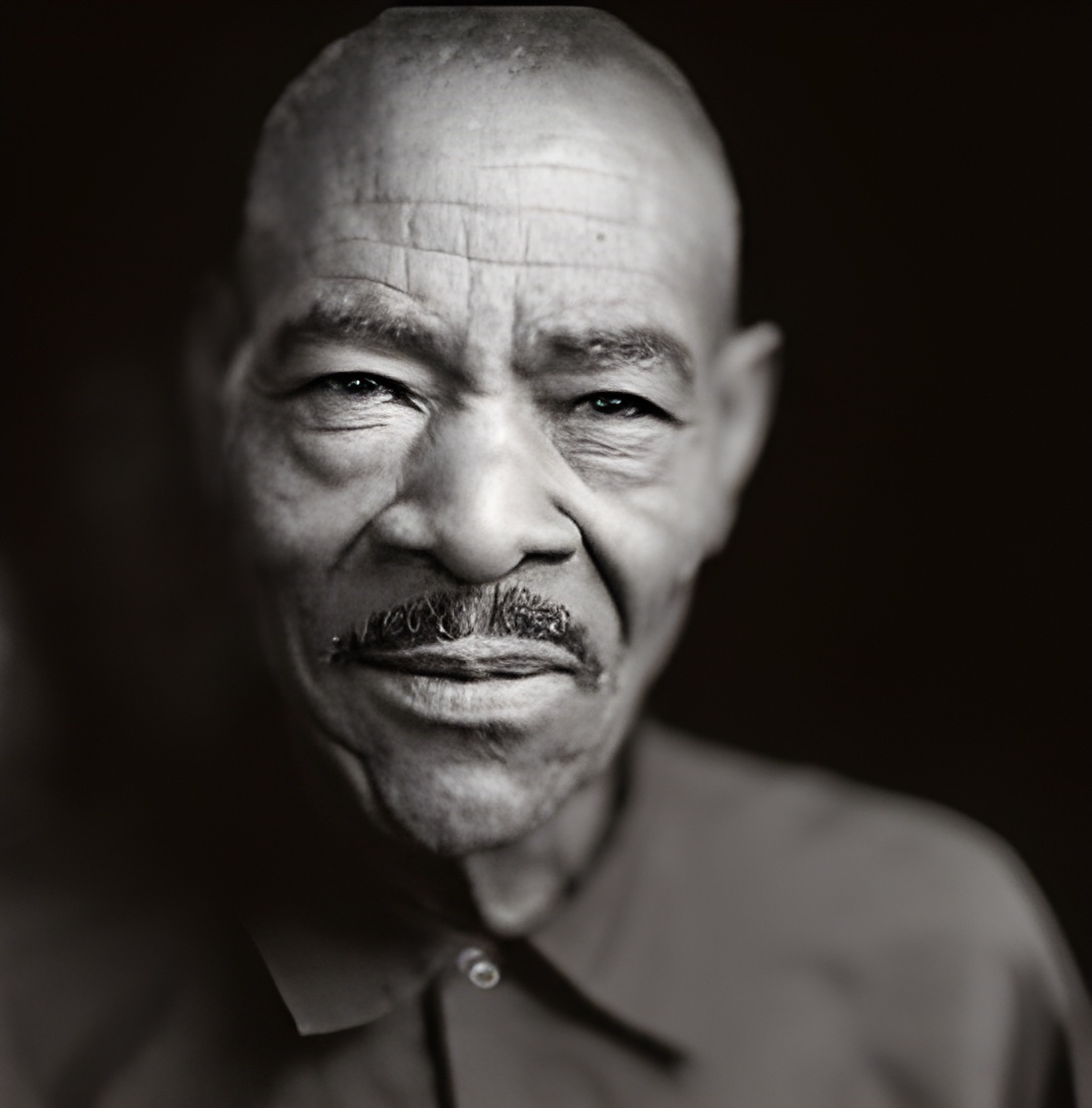No Permission Needed: The Unstoppable Vision of Thornton Dial
Thornton Dial, Artist
Thornton Dial (1928–2016) was born in Emelle, Alabama, just a few hours from here, and if you don’t know his name, you’re not alone. For most of his life, the world didn’t know him either. He built things—first as a metalworker, then as an artist—turning cast-off scraps, discarded wood, twisted metal, and worn-out fabric into massive, layered compositions that refused to be ignored. He wasn’t just making art. He was telling stories—stories about Black life, about struggle, survival, and dignity. And for a long time, like so many artists born into obscurity, his work existed in the shadows.
Before the art world took notice, Dial lived a full life in Bessemer, Alabama. He was a husband, a father, and a deeply respected member of his community. He worked for decades as a metalworker and a boxcar builder for the Pullman Company, one of the largest employers of Black men at the time. That work—bending, welding, shaping—trained his hands long before he ever picked up a paintbrush or twisted a piece of wire into a figure. He provided for his family, raised his children, and lived his life with quiet dignity, creating art in the background, never seeking recognition, never asking for permission.
It wasn’t until the late 1980s, when collector Bill Arnett recognized the sheer force of what Dial had been creating for decades, that his work started getting the attention it deserved. But even then, the art world hesitated. Critics and institutions didn’t know what to make of a man who had no formal training but whose vision rivaled any celebrated contemporary artist. They called him an outsider, a folk artist, anything to avoid admitting what was obvious—Thornton Dial was one of the most important American artists of his time. Eventually, they couldn’t deny it any longer. His work made its way into the collections of the Metropolitan Museum of Art, the Smithsonian, and countless other institutions. His exhibits spanned the world. Museums that once dismissed him scrambled to acquire his pieces. He became an international art world sensation. But Dial never changed to fit their standards. The world changed to meet him where he stood.
"Shacktown", Thornton Dial. Museum of Fine Arts Houston.
That’s why his story feels so close to home. Here at the Northeast Louisiana Delta African-American Heritage Museum, we’re not the Met, the Smithsonian, or the Guggenheim. But the work we do—the history we preserve, the artists we showcase, the stories we bring to life—is no less vital. Like Dial, we take what’s in front of us—the culture, the history, the legacy of the Delta—and we build. We layer. We piece together something lasting, something undeniable.
Dial never softened his vision for the sake of acceptance. He created because the stories needed telling. That same spirit runs through the work of artists with ties to this region—Kerry James Marshall, Don Cincone, and many more who have dedicated themselves to documenting Black life with depth, dignity, and a refusal to be erased. Marshall, with his striking, deep black figures that reclaim and redefine how Black people exist in fine art. Cincone, with his elegant, emotionally charged portraits. And Dial, with his monumental, chaotic, and deeply intentional compositions that demand space in a world that once ignored them.
This museum operates on that same foundation. We aren’t chasing visibility. We’re doing the work because it matters. We are doing it with the same kind of commitment that Dial had to his art. We will continue to grow, to thrive, and to be the institution this region deserves.
If there’s one thing Thornton Dial’s legacy proves, it’s that recognition comes not from seeking permission, but from committing to the vision. Dial didn’t wait for the art world to notice him. He built, he created, he preserved history in ways that others wouldn’t—or couldn’t. And eventually, the world caught up. That’s exactly how we see it. The acclaim will come. The world will catch up. Will you be part of the movement that makes it happen?
If you want to learn more about Thornton Dial and his incredible journey, we highly recommend watching the documentary Meet Alabama’s Prolific Artist Thornton Dial, which you can find here. It’s a powerful glimpse into the life of an artist who refused to be ignored, and a reminder that greatness isn’t always found in the places the world expects to look.



